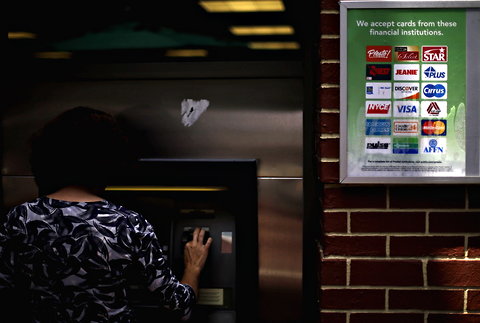The most popular such gizmo — or at least the most heavily marketed — has been Jawbone’s stylish, rubberized, shower-proof Up band ($130). For about a week on a battery charge, it quietly measures your movement, whether you are awake or asleep, and displays the results on your iPhone or Android phone.
The trouble with the Up band, however, is the way it communicates with your phone. You remove the bracelet. Pull off a metal cap about the size of a blood cell. Plug the newly exposed connector into — get this — your phone’s headphone jack. Open the app. After the data transfer, disconnect the band, find the cap, snap it back on and put the bracelet on again.
No wireless? What is this, 1957?
The inconvenience is bad enough, but — well, let’s put it this way: There’s a reason Up sells a three-pack of replacement caps ($10).
Now Fitbit, whose original 2008 tracker clipped to your clothing, has entered the bracelet game with a screamingly obvious improvement: Bluetooth. Its new Flex band ($100) communicates with your phone wirelessly and automatically. You don’t have to remove, dismantle or even touch the band on your wrist. The Flex’s factory setting is to transmit the data only when you open the Fitbit app on the phone, so you sacrifice little phone battery life.
(The Nike FuelBand, $150, also uses Bluetooth, though it’s a simpler device; it doesn’t try to track sleep or diet.)
The Flex band makes little attempt to score style points. It’s just a thin, solid gray or black rubber strap, a half-inch wide, thicker as it crosses the top of your wrist. But it’s incredibly light and comfortable. In fact, without looking, it’s hard to remember if you’re even wearing it.
Compared to the Up — which is shaped like an overgrown C, with overlapping ends — the Flex’s design has three advantages.
First, it’s a complete circle, so it doesn’t catch on clothing, fly off with your sweater or gouge your hugging partners.
Second, it has a sort of screen. It usually looks like a dark stripe across the band, just a graphic accent. But if you tap twice on it, a line of bright LED dots lights up — up to five, indicating your progress so far that day toward whatever activity goal you set for yourself (say, 10,000 steps). Each dot indicates 20 percent toward your goal; achieving 100 percent earns you a vibrating, five-light flashing rubber-band celebration.
The third improvement is that you can remove the Flex’s heart — a tiny, shiny black capsule that’s held snugly in a pocket within the rubber. (In fact, you must remove it to charge it. The capsule snaps into a USB charging cord for that purpose. One charge lasts about five days.)
The beauty of this design is that you can snap that capsule into other Flex bands. You’re not stuck with the look of the original. Once you have bought the original gray-band or black-band Flex kit, you can buy a $30 set containing teal, orange and navy blue bands. And Fitbit may offer other styles in time.
Which is lucky, because the Flex has one sizable disadvantage: it’s hard to put on. The clasp — two metal prongs that snap into cutouts in the rubber — holds fast, but it’s fussy to connect.
Fortunately, you don’t have to take it off much. You wear it sleeping, exercising, eating, swimming, showering. At any time, you can open the phone app to read the latest stats for the day: steps, distance, calories burned and so on.
The Flex even comes with a tiny plug, about the size of half your thumbnail, that plugs into a USB jack on your Mac or PC. Any time you walk by the computer, the band transmits the latest measurements. In other words, you can use the Flex band even if you don’t own a trendy phone. It’s a terrific stunt.
In all of these ways, the Flex hardware is more convenient, more flexible and less expensive (by 30 percent) than its archrival, the Up band. Alas, the software isn’t nearly as impressive.

E-mail: pogue@nytimes.com
Article source: http://www.nytimes.com/2013/06/27/technology/personaltech/wearable-devices-nudge-you-to-a-healthier-lifestyle.html?partner=rss&emc=rss
